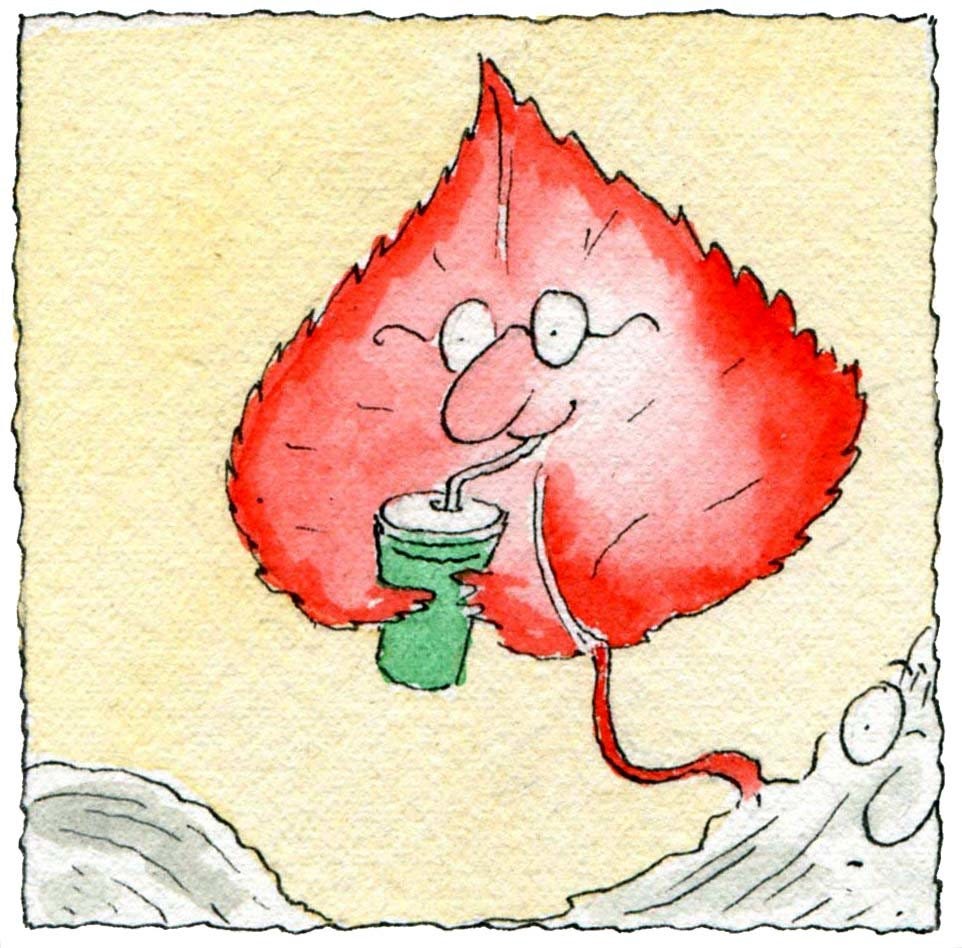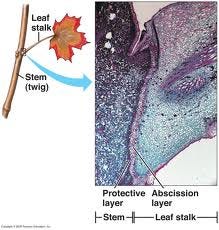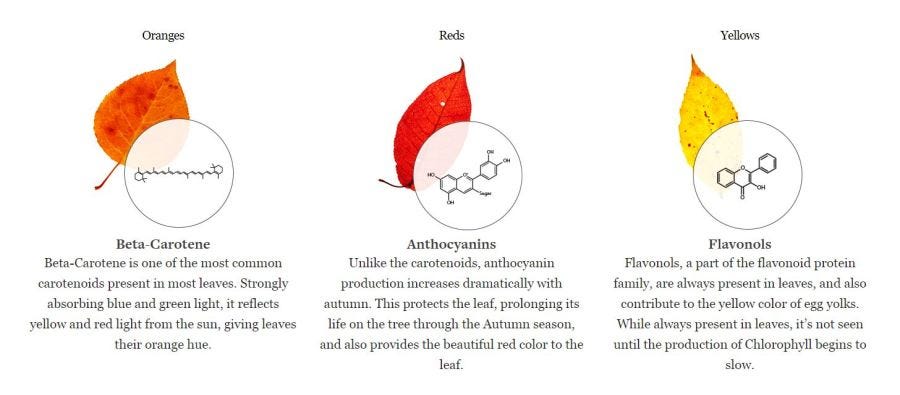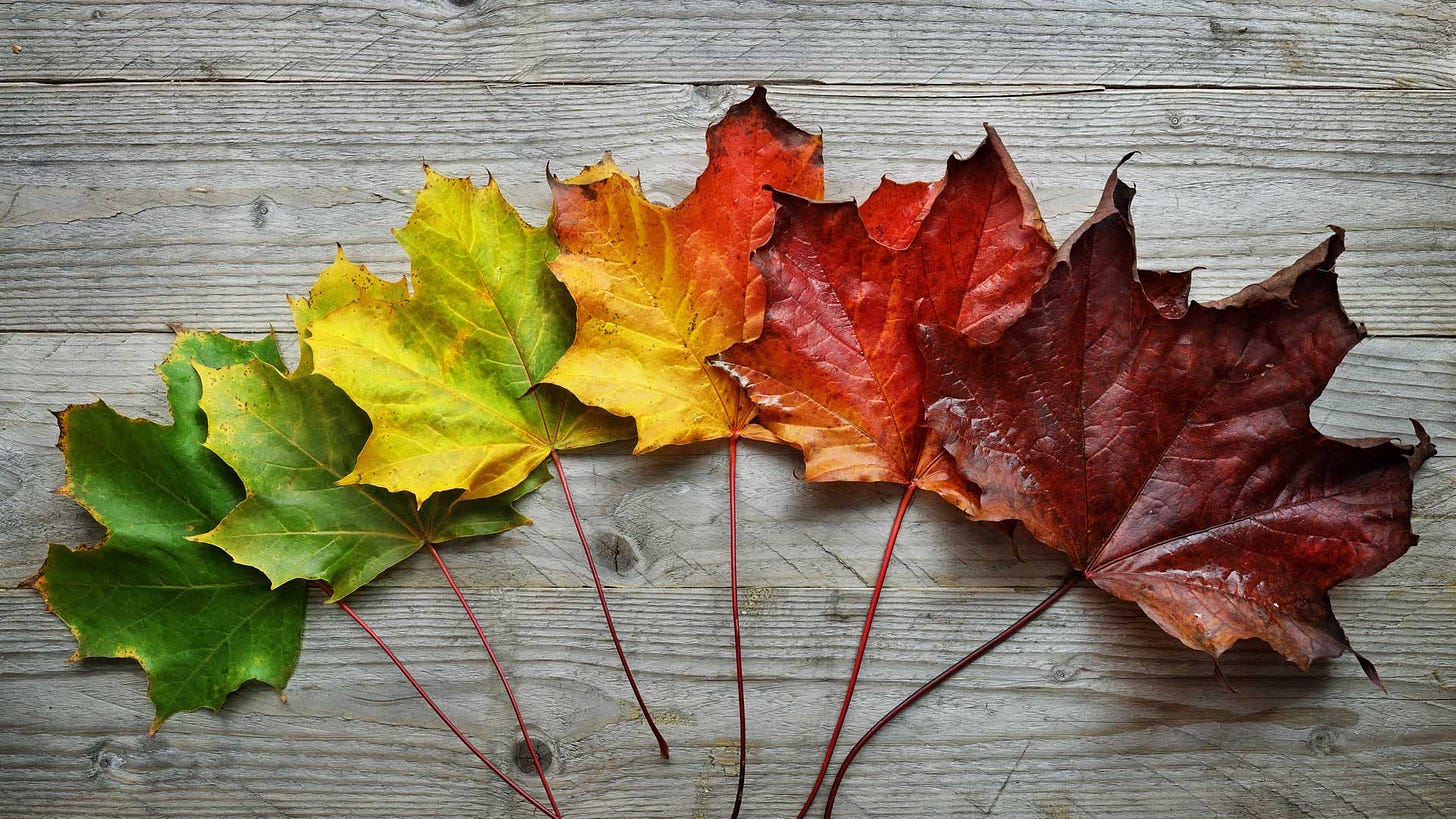Ever wondered why leaves change colour during fall ?
Everyday, everywhere stories from the lens of science
Hello friends!
The transition from summer to winters has begun, Autumn is finally here!
North of equator, in temperate regions, deciduous trees have started the transformation from shades of green to visually pleasing palate of reds, oranges and browns.
The French writer, Albert Camus beautifully describes fall as “a second spring where every leaf is a flower.”
Fall has always been my favourite season, the mesmerising shimmering colour burst always transfix me in awe with wonders of Mother Nature.
Which is your favourite season and why ?
It also makes me curious to understand why leaves change colour during fall ? I bet you must be thinking the same..so let’s discover this together…
Green Beginnings
Green colour in leaves is due to a special pigment called chlorophyll. Chlorophyll possesses superpower which helps the plant to make their own food through a process called photosynthesis and produces oxygen to sustain life on planet. Chlorophyll helps the plant to capture the energy of sunlight as chemical energy, stored in the form of sugars.
Chlorophyll absorbs all the visible colours of sunlight except green which is reflected (bounced off) from the leaf, so it appears green.

Life-cycle of leaves
Green beginnings, transitions in colour and finally falling of leaves (abscission) are characteristic features of temperate deciduous plants.
Since it’s impossible for plants to change their location in response to unfavourable temperature conditions, they have evolved an adaptive mechanism that allows them to survive harsh winter conditions by alternating between active growth and dormancy according to seasonal climate changes.
Before continuing with deciduous trees, we should quickly mention Evergreen trees, that don’t lose their leaves or needles and, therefore stay ‘green’ all year round.
Fun fact: not all evergreen trees are strictly green !
Can you name some non-green evergreen trees ? Leave you answer in comment box!
Early trigger cues: Changes in duration of night period and temperature
Plants respond very sensitive to photoperiod and temperature changes in the environment. They use them as a seasonal cues.
Special temperature and light sensors like phytochrome B (PhyB) have been identified on plants. Phytochrome B is the gene that encodes a light-sensing protein. It is present in two alternative forms: active form shows maximum absorbance in far-red of the electromagnetic spectrum and inactive form absorbs the red wavelength.
In short, these sensors help the plant to detect quality and intensity of light and it also give plants the ability to measure environmental day length, typically by monitoring the duration of night period (a phenomenon called photoperiodism).
Isn’t it phenomenal! Plants can sense the advent of Fall with the help of these specialised sensors.
Did you know? In autumn, when the tree is starting to become dormant, the leaves closest to the light poles are often the last to fall. Because the light disturbs the circadian rhythm of PhB protein and changes the signals.
Biological mechanisms behind the golden shades of autumn
In response to longer nights, declining intensity of sunlight, cooler temperature plants trigger the bio-chemical processes in the leaf to prepare for harsh winters. Without insufficient energy for photosynthesis to take place, leaves essentially lose their value.
What happens next? Plants go into conservative mode to preserve their precious resource, chlorophyll. Since it takes a lot of energy to make chlorophyll, plants stop producing it and starts the break down of existing chlorophyll to reabsorb the molecules that make up chlorophyll.
Then, when it's warm and sunny enough to grow again, the plants can use those molecules to remake the chlorophyll. That way the plants don't have to make chlorophyll from scratch.

As chlorophyll goes away, dominant green pigment starts to fades off and other pigments start to show their colors. This is why leaves turn yellow or red in fall.
Trees also begin to shut down their vein system, which usually provides each leaf with the water and nutrients it needs. These clogged veins trap sugars in the leaf and promote production of anthocyanin (red coloured pigment).
In parallel, there is formation of new layer of cells between the leaf stalk and the twig holding it, known as the abscission layer.

Once this separation layer is complete it slowly cut the leaf from the plant without leaving an open wound. When all the leaves fall, the plant enters dormancy, saving its energy for the great bud burst of spring.
Chemistry of Autumn Colours

Besides chlorophyll, leaves also produce other chemical pigments, such as Carotenes (gold, orange) and Xanthophyll (yellow). These colours are not visible as they remain hidden behind active green chlorophyll which makes the leaves dominantly green.
As the green colored chemical exits the plant leaves, other pigments that have always been there are finally revealed. The leaves emerge in vibrant oranges and yellows. Interestingly, the carotenoid pigments in leaves are the same as those found in carrots, sweet potatoes, papaya, mangos, tomatoes and oranges!
Interestingly, some trees like, maples and dogwoods can produce brilliant red, crimson coloured pigments called Anthocyanins. Anthocyanin synthesis and the color intensity of red is increased by a succession of warm, sunny days and cool, crisp but not freezing nights.
Besides giving a spectacular colour to autumn leaves, anthocyanins also protect leaves from being eaten or getting sun burned. They also contribute in shielding of leaf chloroplasts from excess sunlight during dormancy.
Leaves turn brown when there are no more photo-sensitive pigments; only the tannins are left.
"I think of the trees and how simply they let go, let fall the riches of a season, how without grief (it seems) they can let go and go deep into their roots for renewal and sleep," wrote the poet and novelist May Sarton in "Journal of a Solitude."
Let’s recall: Science behind fall colours !
Chlorophyll is the dominant colour pigment and make leaves green. It absorbs sunlight and water to feed glucose to trees and produce oxygen.
Trees stop producing chlorophyll as nights become longer and temperature falls, exposing yellow and orange pigments.
Veins connecting leaves to trees close, trapping sugars in some leaves creating brilliant red pigments.

